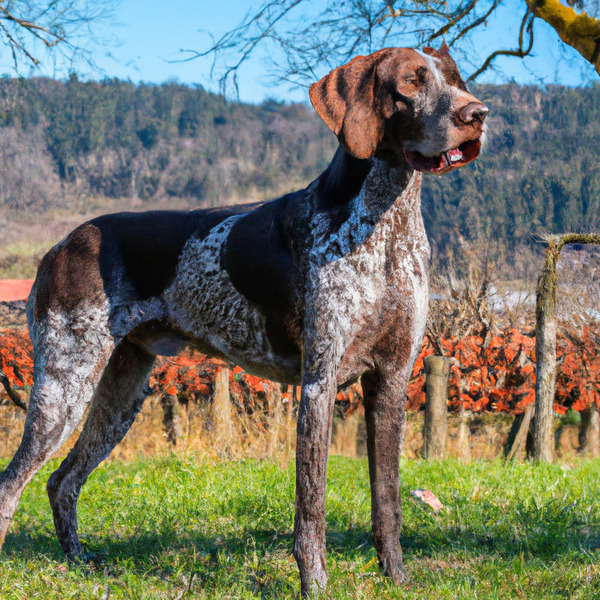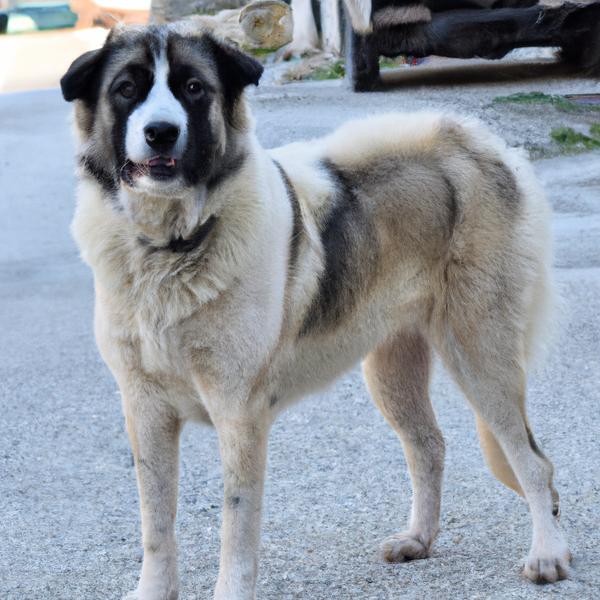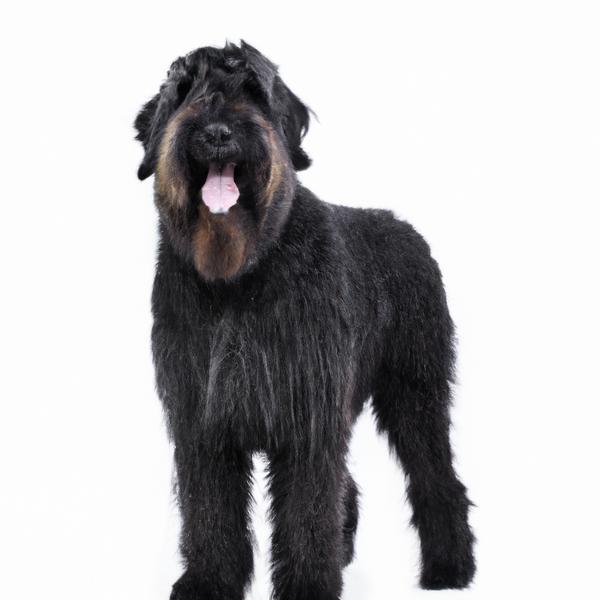Weimapeake vs. Westeke: Breed Differences and Similarities
Hypoallergenic
Are Weimapeakes or Westekes hypoallergenic, or neither?
Unfortunately, neither Weimapeake nor Westeke are hypoallergenic, which may not make them the best choice for dog lovers who suffer from pet allergies.
Temperament
What are the personalities of Weimapeake and Westeke dogs?
Stubborn
Aloof
Happy
Energetic
Protective
Alert
Powerful
Intelligent
Affectionate
Dominant
Social
Steady
Quiet
Fast
Curious
Independent
Agile
Alert
Courageous
Intelligent
Confident
Friendly
Affectionate
Fearless
Faithful
Shedding Level
Do Weimapeakes shed more than Westekes, or which breed sheds more, Weimapeakes or Westekes?
Weimapeakes are moderate shedders, but regular brushing can reduce shedding and maintain coat health.
Westekes are low shedding dogs, requiring minimal coat care.
Ancestry
What are the origins of Weimapeake and Westeke breeds?
Chesapeake Bay Retriever and Weimaraner
Schipperke, West Highland White Terrier
Date of Birth
When were Weimapeake and Westeke breeds first developed?
Unknown
Eye Color Possibilites
What are the eye colors of Weimapeake and Westeke dogs?
Hazel
Brown
Amber
Brown
Nose Color Possibilites
What are the natural nose colors of Weimapeake and Westeke?
Blue
Black
Brown
Black
Coat Color Possibilites
What are the natural colors of the coat for Weimapeake and Westeke breeds?
Gray
Brown
Red
Blue
Silver
Black
White
Coat Length
What is the typical coat length for Weimapeake and Westeke breeds?
Weimapeakes have medium-length coats.
Westekes are known for their coat length.
Coat Density
What is the density of the coat of Weimapeake and Westeke?
Coat Texture
What is the hair texture of Weimapeake and Westeke?
Straight
Wavy
Litter Size
What is the usual litter size for Weimapeake and Westeke?
A Weimapeake can have a litter of 7-9 puppies on average. However, it's worth noting that the size of the litters can vary greatly. Factors that can influence litter size include the health of the mother, breeding history, and genetics.
A Westeke can have a litter of 3-7 puppies on average. However, it's worth noting that the size of the litters can vary greatly. Factors that can influence litter size include the health of the mother, breeding history, and genetics.
Adaptability
Weimapeakes are known for their adaptability and can adjust well to different environments and lifestyle changes.
Westekes are highly adaptable and versatile, making them excellent companions for families and individuals of all lifestyles.
Health Issues
Between Weimapeake and Westeke, which breed is more prone to health problems?
Weimapeakes are susceptible to health issues like all breeds, so it's important to monitor their health and seek veterinary care when needed.
Westekes typically have low vet costs due to their good health, but it's important to monitor their health and seek vet care when necessary.
Major Concerns
What are the major health concerns for Weimapeake and Westeke breeds?
Hip Dysplasia
Hypothyroidism
Patellar Luxation
Cataracts
Craniomandibular Osteopathy
Keratoconjunctivitis Sicca
Legg-Calve Perthes Disease
Minor Concerns
What minor health issues should be kept in mind when owning Weimapeake and Westeke?
Entropion
Elbow Dysplasia
Cherry Eye
Progressive Retinal Atrophy
Cataracts
Sebaceous Adenitis
Urolithiasis
Bloat
Hemophilia A
Tricuspid Valve Dysplasia
Hypodysmyelinogenesis
Allergies
Occasional Tests
What occasional tests are recommended for Weimapeake and Westeke breeds?
Eye
Blood
Dna For Vwd
Liver Ultrasound
Skeletal
Skin Scraping
X-Rays
Ear Examination
Eye examination
Full Physical Examination
Hip
Blood and Urine Protein Screens
Blood Analysis
Wellness Check
cardiac and hip, blood and eye exams
Social Needs
Weimapeake vs Westeke social needs comparison
Weimapeake and Westeke have above average social needs compared to other breeds. They thrive in environments where they have a lot of interaction with humans and other dogs.
Sleeping Need
Which of the two sleeps the most/least: Weimapeake or Westeke?
Weimapeakes are active and require sufficient sleep to stay healthy.
Westekes sleep less than other breeds but still need adequate sleep for good health.
Mouthiness
Mouthiness Comparison: Weimapeake vs Westeke?
Roaming urge
Weimapeake vs Labrador: Running away tendency?
Prey Drive
Weimapeake or Westeke - which breed has a higher level of prey drive?
Activity Level
Which breed has higher energy, Weimapeakes or Westekes?
Weimapeakes are high-energy dogs. They need mental as well as physical exercise. These dogs require a lot of your involvement and without it they can, and will, become problematic dogs.
Westekes are medium-energy dogs and typically enjoy socializing and playing casual or even sustained games of chase with other dogs. They may also have occasional periods of barking or racing around the house.
Tolerance of being left alone
Walks per Week
How many miles should Weimapeake or Westeke walk each week?
There's really no limit to how far you walk your dog as long as they're comfortable. For Weimapeake, it's at least 14 miles / week. Just remember to build distance and stamina gradually over time.
There's really no limit to how far you walk your dog as long as they're comfortable. For Westeke, it's at least 7 miles / week. Just remember to build distance and stamina gradually over time.
Activity per Day
Do Weimapeakes or Westekes require more exercise?
In general most Weimapeakes usually need at least 90 minutes of exercise daily. This can be spread across the day and include all sorts of high-energy activities, like walking, running and playing.
In general most Westekes usually need at least 30 minutes of exercise daily. This can be spread across the day and include all sorts of high-energy activities, like walking, running and playing.
Grooming
Which breed is easier to maintain in terms of grooming, Weimapeakes or Westekes?
The Weimapeake has low grooming needs and is easy to maintain.
The Westeke requires an average amount of grooming compared to other breeds.
Brushing Frequency
What is the recommended brushing frequency for Weimapeake and Westeke dogs?
Weimapeake and Westeke should be brushed at least once a week. Of course, you can give them more frequent brushes if you find that they are still shedding a lot.
Brushing Tools
What brushing tools are used for Weimapeakes and Westekes?
Slicker Brush
Nail Clipper
Slicker Brush
Comb
Nail Clipper
Cups
How much food should be given to Weimapeake or Westeke in cups?
For an average 60-80 pound (27 - 36 kg) Weimapeake feed 3 cups daily. But, keep in mind, the amount you feed is going to be dependent on the quality of the food you are feeding.
For an average 13-14 pound (6 - 6 kg) Westeke feed 1 cups daily. But, keep in mind, the amount you feed is going to be dependent on the quality of the food you are feeding.
Daily Cost
Which breed has a higher daily cost, Weimapeake or Westeke?
The average cost of a Weimapeake is somewhere $1.70 - $2.70 per day.
The average cost of a Westeke is somewhere $1.40 - $2.80 per day.
Monthly Cost
Which breed has a higher monthly cost, Weimapeake or Westeke?
The average per month expenses of a Weimapeake is between $48 - $73. This makes an average of $576 - $876 per year. It will be on the higher side when the dog is still small because it will need more frequent visits to the vet, shots.
The average per month expenses of a Westeke is between $28 - $42. This makes an average of $336 - $504 per year. It will be on the higher side when the dog is still small because it will need more frequent visits to the vet, shots.
Sensitivity Level
How do Weimapeake and Westeke compare in sensitivity?
These breeds are more sensitive than others and easily overwhelmed by new surroundings and people. Weimapeake and Westeke need gentle handling and a calm, stable home environment with positive reinforcement training.
Apartment Friendly
Which breed is more apartment-friendly: Weimapeake or Westeke?
The Weimapeake is not suitable for apartments and requires a large yard to thrive. Pent-up energy in small spaces can lead to destructive behavior.
Westekes are good apartment dogs as long as they get enough exercise and stimulation outside of the apartment.
Child Friendly
Do Weimapeakes or Westekes have a friendlier temperament towards children?
Weimapeakes have an average level of friendliness towards children.
Westekes are good with kids if socialized and trained from a young age.
Senior-friendly
Which dog is more suitable as a pet for the elderly - Weimapeake or Westeke?
Cat Friendly
Do Weimapeake or Westeke breeds have a better compatibility with cats?
Weimapeakes and Westekes are one of the best dogs for cats. They accept cats readily as part of the family. However, this dog breed should be trained to not chase after the kitty early on
Dog Friendly
Which breed is more sociable with other dogs: Weimapeake or Westeke?
Weimapeakes are average in their friendliness towards other dogs, and socialization can help.
Westekes are friendly and active companions, and can be good family pets, though their friendliness towards other dogs may vary.
Pet friendly
How do Weimapeake or Westeke dogs interact with other pets?
Stranger Friendly
Which breed is more friendly with strangers: Weimapeake or Westeke?
Weimapeake and Westeke are average friendly around strangers. They can be wary around strangers and a little standoffish, so early socialization is key to ensure they are comfortable around new people.
Playfulness
Which breed is more playful between Weimapeake and Westeke?
Weimapeake and Westeke are known to be highly playful dogs. So if you're not up for all that, think about adopting slightly older Weimapeake and Westeke for a mellower experience.
Trainability
How do the trainability levels of Weimapeakes and Westekes compare?
Weimapeake and Westeke dogs are known for their ease of training and ability to learn quickly, making them a popular choice for pet owners and trainers alike.
Compare Weimapeake with other breeds

Westeke
Weimapeake vs Westeke

Crestoxie
Weimapeake vs Crestoxie

Papshund
Weimapeake vs Papshund

Cavaton
Weimapeake vs Cavaton

Rus-A-Pei
Weimapeake vs Rus-A-Pei

Braque d'Auvergne
Weimapeake vs Braque d'Auvergne

Dach-Griffon
Weimapeake vs Dach-Griffon

Jack Highland Terrier
Weimapeake vs Jack Highland Terrier

Jack-A-Ranian
Weimapeake vs Jack-A-Ranian

Croatian Sheepsky
Weimapeake vs Croatian Sheepsky

Bouvier des Flandres
Weimapeake vs Bouvier des Flandres

Rhodesian Labrador
Weimapeake vs Rhodesian Labrador
